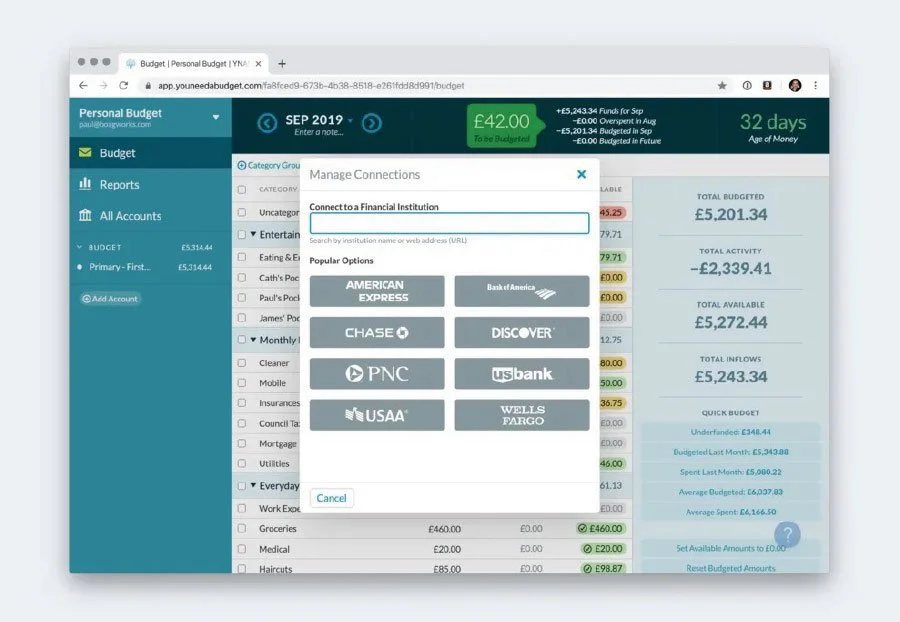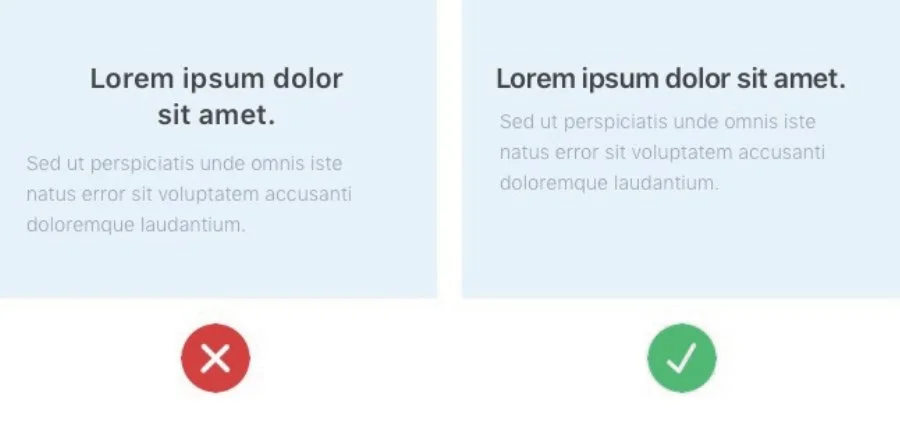A decent user interface may significantly influence an application's usability and user experience. Let's face it: a difficult-to-use program will be utilized inefficiently, if at all. We should all strive to design an interface that allows and encourages end users to use an application regularly, allowing them to become more confident, efficient, and productive users.
What exactly are UI issues?
When numerous things happen simultaneously — when there are several features in one area - UI difficulties occur in designs. It might not be easy to put items correctly on a page, but organizing things gets easier when you aim for simplicity, which improves usability. Users may not comprehend the full potential of apps due to UI issues, which defeats the objective of the application's creation.
Creating a Good User Interface
So, what are the required components of a successful user interface? The following are the components of a successful user interface:
Use it to complete a task with the least effort and error.
Quickly learn how to utilize the interface/application/software without substantial training or support.
Keep in mind how to utilize it the next time they log in.
Use it instead of another method to complete the task (i.e., manually, in a spreadsheet, etc.).
A decent interface helps users to find items in a logical order. Maximizing functionality while keeping an interface simple and easy to use might be challenging.
Specialties to look out for in a good interface
• Consistent. There are no surprises or misunderstandings! Logical navigation and hierarchy make it easy to master an application
• Simple, clear, and concise Keep features while removing clutter. To prevent distractions and mistakes, remove any extraneous features and material
• Intuitive. Simple navigation and obvious shortcuts foster familiarity and help people get up to speed fast
• Responsive. Nobody should be spending time waiting for items to load
• Flexible. It should be simple to update and add new features
Is it necessary for a UI to be visually appealing? You want consumers to utilize it (and preferably enjoy it), and beauty may assist. Remember that "beautiful" does not always imply "useful."
Before delving into what makes a robust interface, consider the dangers an organization suffers when it settles for a poor interface. If an interface is not designed with the user in mind, no one will be able to discover the information they require when they require it, nor will they remember where it is. It's like being trapped in a downpour and unable to open your umbrella. You're fortunate to have an umbrella, but its poor design results in a terrible user experience, not to mention being drenched.
A poor UI can lead to a host of inefficiencies
A poor UI can lead to inefficiencies, which include:
• Task processing is sluggish
• Increased error rates
• Inaccurate data
• Untrustworthy reports
• Sluggish onboarding
• Increased training expenses
• Excessive help desk calls
• Poor morale
• Excessive employee turnover
Top 10 indicators that your website is providing a poor customer experience
A decent user experience is essential for every estate agent website. An excellent user experience website will be simple to use, efficient, and give the user relevant and valuable material throughout. Poor UX, on the other hand, can completely demolish your online efforts. Here are ten indicators that your website is providing a poor customer experience:
1) Difficult navigation
If your website's style and navigation are not evident and straightforward, your audience will be confused and irritated because they cannot locate what they are searching for.
2) Imposing stuff on users
Don't make the mistake of imposing your requirements on your users. Many websites display popup windows requesting the visitor to do something, such as register or like their social network page. Forcing your viewers to do things will result in many people leaving your website.
3) Difficult User Experience
Some website owners try to stay ahead of the competition by modernizing their websites with various tricks and animations that make them feel distinct and innovative. Making the user experience more complicated than necessary, on the other hand, will not delight your audience. All your user needs is a straightforward and quick user interface; don't obstruct it with gimmicks.
4) Lack of critical information
When users see a property on your website that piques their interest, they may want to contact you for further information. However, if your contact information is missing, the potential consumer will be irritated. Ensure that all critical information, like phone numbers, office addresses, and other internet contact information, is included across your website.
5) Excessive information
Too much data and not enough room? This is a common problem with many websites, but cramming all of your services in may result in information overload, leaving your visitors confused and unsure of where to proceed.
Your website should be clean, clear, and well-organized so visitors can quickly locate what they are searching for without becoming sidetracked.
6) Overly focused on sales
Over-promotion is never good, even if your website's sole objective is to offer your services and properties. You should always provide informative information to keep your audience on your website. Many estate agents make the mistake of marketing themselves too much on their site, with hundreds of call-to-actions, and neglect to deliver the content that keeps their audience interested and amused. Your website should fulfill the demands of your visitors without pushing a sales pitch down their throats.
7) Unappealing material
Your target audience seeks information, which you should supply and swiftly. It should be relevant to the user's search and written in a way that keeps them amused and engaged.
8) Outdated design and content
Your potential consumers will not profit from outdated content. All of the information on your website must be current and accurate. You should also maintain your website design up-to-date to provide the optimum user experience.
9) Incompatibility with mobile devices
Over 50% of an estate agent's traffic comes from a mobile device; if your website isn't mobile optimized, it will be difficult to use from a tiny device. This will most certainly raise bounce rates and harm your brand.
10) Page loading time
Consumers would prefer that your website load quickly. Waiting for pages to load is inconvenient and will create doubt in the eyes of your potential consumers.
Advantages of improving user interface
Although user experience is essential, enhancing your UI design is not a solely altruistic act. Your company/website will significantly profit if consumers can quickly traverse the interface and are satisfied with it. A decent user interface may mitigate these disadvantages and provide significant benefits such as the following:
• Enhanced customer loyalty
• Higher conversion rates
• Increased return on investment (ROI)
• Increased consumer satisfaction
• Lowering costs
• More and faster user uptake
• Fewer mistakes
• A more engaged and content workforce
Tips for improving your user interface:
• Simple navigation
• Web page consistency
• Simple to use
• Rapid loading on mobile and desktop
• Less dense substance
• Adequate white space
• High-quality visuals
• CTAs
• Mobile view optimization
What can you do if you've determined that your user interface is good?
Experiment with many amazing design concepts before settling on one. This reduces the likelihood of costly and time-consuming adjustments later in the process.
Set quantifiable objectives and track actual behavior. Before changing your interface, measure your workers' interactions and productivity to compare the new environment to the standards you set. Are you obtaining the productivity increases you desire?
Implement and assess. By sampling actual user operations, you may uncover hidden inefficiencies. Examine the screen for recurrent screen interactions, redundant procedures, perplexing warnings, circumstances that necessitate moving between programs, and screen clutter that might result in significant downtime. Data from users offers a vivid picture of what is occurring to whom and when. And once you have it, you may take corrective action instead of waiting for disgruntled people to file assistance queries.
The use of UX and UI design tools is rapidly evolving.
What exactly are UI design tools?
Various tools develop the software application's user interface (UI). It enables the developer to create a user interface based on the designer's design method. We select user interface (UI) tools to make the UI for software applications based on the vector-based learning curve, workflow sharing with a team, component utilization, simplicity of labor, cost factors, and level of accuracy. Some tools are used for wireframing (the blueprint of the structural level design of a user interface). In contrast, others are used for UI design and prototyping software application user interfaces. Depending on the application, we may select the proper UI design tools by examining design components, ease of use, cost, and fidelity of the tools, among other factors. The user interface (UI) design tools are crucial in assisting developers in creating a great UI for the software application.
Each design and product development stage is now aided by various technologies, from early exercises on the whiteboard to working on the final product. The usability and accessibility of these technologies have never been better, making product creation more manageable and robust for everyone.
Finally, a decent interface promotes efficiency, enhances production, assists end users, and saves your business money.










